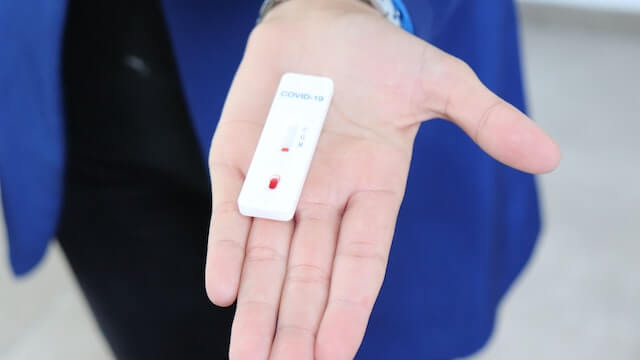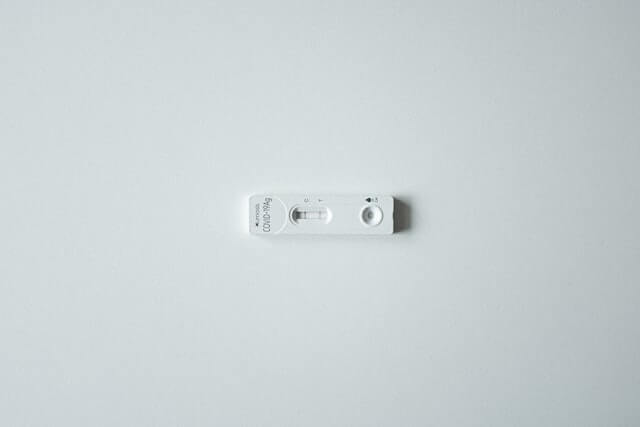
Why Do You Test Negative When Sick or Exposed to COVID-19
The SARS-CoV-2 virus, just like most viruses, takes time before it builds up in the body. The virus can take up to three days to replicate to levels that are high enough to be detected by a Healgen antigen test or any other Covid-19 test. This is one of the reasons why some people have Covid symptoms but negative test results on LFTs.
However, there are other possible explanations why you may have a negative Covid test but still have symptoms, as we’ll learn in this article.
Reasons a Negative COVID-19 Test Doesn’t Mean You Don’t Have It

One of the commonly asked questions by our customers is- can you test negative and still have Covid?
Unfortunately, yes.
A negative Covid-19 test doesn’t mean you aren’t infected with the virus. Let’s look at some of the possible explanations why you may have Covid-19 symptoms but negative test results.
As noted earlier, SARS-CoV-2- the virus that causes Covid-19 takes two to three days to build up in the body. This means that taking a nasal or throat swab in the early phases of a Covid-19 infection may lead to a negative lateral flow test, as the virus may not have replicated to high levels in the nasal or throat area.
Also, depending on the amount of virus you were exposed to during the time you got the SARS-CoV-2 infection, the virus may take longer to replicate in your body. A negative Covid-19 test in such scenarios isn’t an indication that you aren’t infected.
Additionally, a Covid-19 infection in a person who is vaccinated may lead to a viral load level that isn’t high enough to result in a positive lateral flow test. However, the person may still exhibit Covid-19 symptoms.
Another explanation may have to do with the technique used during sample collection. A poor sample collection technique can lead to an inadequate sample that has a very low viral load. When the viral load is very low, the result of the test will be negative even if the person may have an active Covid-19 infection. This is why it’s important to follow the lateral flow testing kit package instructions very carefully and to do the swabbing for the recommended duration.
We also need to consider that all medical tests aren’t 100% accurate. Both the PCR and the lateral flow Covid-19 tests have a small risk of giving inaccurate results. In one study published by the CDC, it was found that lateral flow tests provided 20% false negatives in people with symptoms and a 59% false negative rate in asymptomatic patients.
According to the NHS, people who test negative on lateral flow tests but have been exposed to Covid-19 or are showing symptoms of the same can use the more sensitive PCR test to confirm their negative rapid antigen test results.
Also, if you’re symptomatic but your FlowFlex rapid test result is negative, you can do two lateral flow tests 48 hours apart to help confirm the results if you can’t access a PCR test.
Can You Be Contagious While Testing Negative?
The NHS recommends that if you have Covid-19 symptoms, you should stay at home and isolate yourself from others for at least seven days even if you test negative for Covid.
Even when your symptoms are mild, it’s recommended that you self-isolate and mask up while outdoors. Mild symptoms can lead to severe illness for others, especially the ones who are at a higher risk of contracting Covid-19.
You should also test again for Covid-19 after a few days. The NHS further recommends that it’s safe to stop isolating after seven days if you no longer have symptoms and your Covid-19 test result is negative.
Why the Type of Covid Test Matters

The two commonly used diagnostic tests for Covid-19 are the PCR and the lateral flow tests. The type of Covid test you use matters because the two tests work very differently.
PCR tests are very sensitive, and they can detect extremely small amounts of the SARS-CoV-2 infection in a sample. Also, PCR tests are more likely to give false positive results as they can detect very small amounts of the virus when they remain in the respiratory system even after someone is healed of Covid.
Rapid antigen or lateral flow tests aren’t as sensitive as PCR tests. However, LFTs are more accurate when there is a lot of virus in the body or when someone is most contagious. This means that if you use a rapid antigen test in the early stages of infection when there isn’t enough viral load to be detected in your body, the test can give false negatives.
The recommendation is that if you believe you may be infected or you’re in doubt about your negative LFT result, take a PCR test. If you can’t access a PCR test, you can take another lateral flow test after a few days. Taking two LFTs 48 hours apart is also recommended for people with symptoms.
What You Should Do If You Test Negative But Still Feel Sick
If your Covid-19 test results are negative, but you’re experiencing symptoms such as the loss or change in smell and taste, a sore throat, a continuous cough, or a fever, here’s what you should do:
- Isolate at home and avoid contact with people
- Avoid meeting those who are at a higher risk of getting infected with Covid-19. These include those with low immunity and those with serious medical conditions
- If you must leave your home, ensure you wear a face mask, avoid crowded places and cover your nose and mouth when you sneeze.
- If you experience severe Covid-19 symptoms such as shortness of breath, body aches, sore throat, fever and chills, and fatigue, contact your doctor immediately
If you have several negative antigen test results several days apart and your confirmatory PCR test result is negative, it’s most likely that you aren’t infected with Covid-19. If you still have symptoms even after these tests, you should consider that a different virus or bacteria could be making you sick. For instance, respiratory infections such as influenza and rhinovirus-the virus that causes the common cold have very similar symptoms to Covid-19.
Conclusion
Covid-19 testing is a crucial strategy for preventing the spread of Covid.
However, a negative Covid-19 test does not always mean you aren’t infected.
If you have Covid-19 symptoms such as high temperature, continuous cough, and a change or loss of smell or taste but your Covid-19 rapid antigen test result is negative, you need to self-isolate and take a confirmatory PCR test. If you can’t access a PCR test, try taking multiple LFTs over multiple days.



